.png?width=700&auto=webp&quality=80&disable=upscale)
Clean protein, convenience, transparency shape 2013 food trendsClean protein, convenience, transparency shape 2013 food trends
We're more discerning of product labels, empowered to improve our food system and seeking whole food sources to address specialty diet and health concerns. How will these factors influence the marketplace? Here's a closer look at five forces shaping tomorrow's food trends.

From Prop 37 to Pink Slime to Mayor Bloomberg's soda ban, 2012's top headlines demonstrated consumers' growing interest in knowing exactly where their food comes from and what's in it. Shoppers are taking time to ask questions and research products before making purchasing decisions, and foods that deliver nutrition from whole, minimally processed ingredients are increasingly in demand.
Last year we produced the NEXT Forecast, which took a stab—and a pretty accurate one—at forecasting how the nation's growing interest in health and other societal macro forces would combine to shape tomorrow's natural products trends and opportunities.
Now, as more industry think tanks offer predictions in the New Year, we have an opportunity to compare notes. Fresca Foods is a Boulder-based brand accelerator which has helped to build some of the fastest-growing companies within the natural products space, including Justin’s Nut Butter, 34 Degrees Crackers and Plum Organics.
We looked at five of the company's food trend predictions to see how they line up with our coverage throughout the year.
T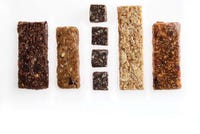 rend 1: Convenience is (still) king
rend 1: Convenience is (still) king

"More and more of our meals and eating occasions are happening away from home. In the real estate industry, it is said that ‘location is everything.’ In the packaged food industry this is also now the case. Brands that offer portable, convenient, resealable or single serve packaging formats will have a leg up." —Fresca Foods
Products that eliminate one extra step will reign at Natural Products Expos East and West in 2013. Think, nut butters fortified with 50 percent of your daily recommended vitamins and water bottles outfitted with citrus juicers for easy flavored water. Along these lines, the inherently convenient bar category will continue to thrive. New products are reviving the market with a much-needed breath of fresh air as manufactures continue to move away from tasteless, solely functional sports bars toward products that promote functionality and flavor. Look for more gluten-free options in 2013 as well as category introductions for Paleo eaters.
In January we predicted the nutrition bar market to reach $3 billion by 2013. Read the full story here.
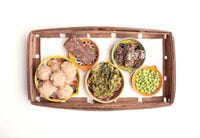 Trend 2: Specialty diet snacking
Trend 2: Specialty diet snacking

"We are spending more dollars and consuming more pounds of snack foods than ever before. According to The NPD Group, more than half of us are snacking 2-3 times a day, up from 20 percent just 3 years ago. As we eat more frequent, smaller meals, Fresca believes consumers will increasingly depend on snack foods as a source of nutrition as well as hunger satisfaction. As evidence of this trend, 7 out of 10 new snack foods launched this year make a health claim, such as 'all natural,' 'gluten free,' or 'whole grain.'"
Gluten-free, vegan and raw snacks were de rigueur in 2012 and will continue their upward trajectory in 2013. Flavor and nutrient-dense ingredients will be a top priority as well as tailoring snacks to appeal to more than one specialty diet i.e. gluten and diary free or vegan and gluten free. Today, consumers are seeking foods to address more than one concern. The impact of Prop 37 will also encourage more CPG companies to go after Non-GMO Project Verification or add an unverified "GMO-free" label.
“Ten years ago, people couldn’t pronounce the word vegan, and now it’s everywhere,” says Joseph Connelly, publisher of VegNews. “It’s definitely becoming mainstream.” Read why, and see 5 vegan, raw snack picks.
Trend 3: True transparency 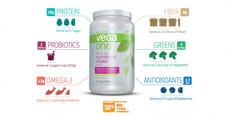

"Clean food labels are becoming increasingly important. The local and organic movements were just a beginning. Consumers are demanding more transparency for what is in their food and how it is made. More pressure will be placed on producers to make more wholesome, less processed foods. We anticipate that the non-GMO discussion will gain widespread momentum over the next several years."
We agree that growing numbers of consumers are clamoring for transparent food labels that spell out exactly what's in a product and how it's made. Luckily a handful of innovative food companies have already stepped up to the plate, and we expect to see even more in 2013. Harmelss Harvest is one such example and makes ethically sourced, organic, raw coconut water. The company has built into its company mission a goal to connect consumers to the indigenous communities where their ingredients are sourced. Another brand, One Degree Organic, uses front-of-pack QR Codes to link shoppers to the farmers that grew the ingredients in the product they're holding.
In a world where bad news goes viral in seconds, the era of giving lip service to transparency is over, we wrote earlier this year, adding that "The good news for natural products retailers is that many of the brands you carry are well ahead of this macro force and are building transparency into their supply chains, manufacturing processes and packaging."
Trend 4: Protein, please 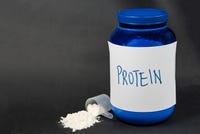

"Protein is a macronutrient that our bodies need in relatively large amounts. It is an important building block of bones, muscles, cartilage, skin and blood. It also creates sustained energy and a feeling of fullness. Protein will be one of the most sought after nutrients in snack foods and meals. In particular, consumers will desire 'cleaner' forms of protein, such as nuts, seeds, legumes and yogurt. The explosion of high protein Greek yogurt brands, such as Chobani, in the past two years is an example of this growing trend."
Time-strapped consumers have long fantasized about the perfect meal in a pill—a product that could control calories while delivering nutrition and satiety with little fuss. We may never create a one-gulp meal solution, but protein packed CPG products are the next best thing. In 2012, we saw the revamping of the meal replacement category with new products ditching chemicals, artificial ingredients and fillers for whole food sources. The move will help these natural powders and shakes appeal to a wider audience. But this year won't just be about protein in expected places. We agree that satiation will be a top priority for consumers across the board. Anticipate "[fill in the blank] grams of protein" front-of-pack labels on everything from condiments to baking mixes.
Here's a preview of protein ingredients best positioned to attract manufacturers in 2013.
Trend 5: Ancient Wisdom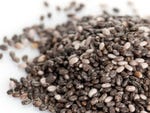

"Ancient grains and seeds will increasingly appear in mainstream products, such as granola, cereals, crackers and breads. Quinoa, flax and chia, among others, are packed with protein, fiber omega-3 fatty acids and antioxidants. While ancient grains and seeds have been popular among health-conscious consumers for years, they are breaking into the mainstream due to their high-nutrient content and versatility."
Backyard chicken coops, home gardens and beekeeping are suddenly considered 'cool,' and we're realizing grandma may have had it right all along. As Michael Pollan told Good Morning America last year, "the wisdom of your mother and your grandmother and great-grandmother has more to teach us about how we eat well than all the scientific studies in the world so far." In addition to taking a second look at tried-and-true ingredients, manufacturers are delivering products using longtime food preservation methods. Fermentation, in particular, is moving to the forefront as consumers connect the process with added health benefits.
Take a look at 6 companies paving the way using ancient wisdom, including Nature's Path, which just launched a cereal made entirely from chia, buckwheat and hemp.
About the Author
You May Also Like



